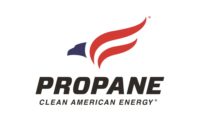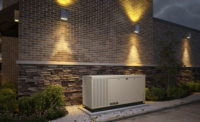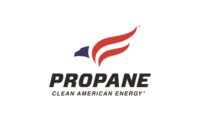The Propane Education & Research Council (PERC) is a nonprofit that provides propane safety and training programs and invests in research and development of new propane-powered technologies. PERC is operated and funded by the propane industry. PERC programs benefit a variety of markets including transportation, agriculture, commercial landscaping, residential, and commercial building.
In our latest installment of the Blueprint Q&A, Bryan Cordill, director of residential and commercial business development, PERC, provides an update on the state of the propane industry, offers his insight on inflation, and much more.
Engineered Systems: Please take a moment and introduce yourself and PERC to those who are reading this article.
Cordill: I’m the director of residential and commercial business development at PERC, which is a single point of contact for safety, education, training, and marketing propane. PERC strives to represent the industry as a whole, giving independent propane providers a single voice. I've been with PERC about three years and have been in the propane industry pretty much my entire life. I grew up doing just about anything you can do in my grandfather's propane business and then went to work in my father's propane business. I ended up having an ownership role when we sold that company six or seven years ago, and then I transitioned over here to PERC. So, I’m very familiar with everything from filling a barbeque cylinder to driving the delivery truck and everything in between.
Engineered Systems: So, propane kind of runs in your blood, doesn't it?
Cordill: Yeah, they say I even kind of smell like it sometimes.
Engineered Systems: Let’s start with a general overview of the commercial propane heating industry. Can you give us a state of the industry, per se?
Cordill: We hear a lot about electrification of heating, central heating, air, steam systems, hydronic systems, etc.. Those systems are all difficult to electrify. We still have a solid industry-wide volume of propane being used in the commercial space. Because of the efficiency of that energy density, we take that liquid propane to the job site, construction site, or building for use. We have a very energy-dense solution that provides great heat at a high efficiency with condensing boilers, furnaces, and all the equipment that's in the market. And, we're just basically doing that where natural gas isn't available. A shift has occurred, particularly through COVID-19, with people moving out of city centers and high-rise office spaces into more rural, closer-to-home areas. Through this residential expansion and commercial relocation, a great demand for commercial heating has resulted.
Engineered Systems: We hear a lot about natural gas, hydrogen, and other fuels, but propane tends to get lost in the mix a little bit. How can propane be best used in commercial projects? Is it only applicable to areas where natural gas is unavailable?
Cordill: Propane is for much more than just where natural gas isn’t available. We can do a mix of propane and air to mimic natural gas in a building. So, if you're in a situation where the utility offers you a curtailment agreement, meaning they will charge you less all year if they can take natural gas away from you during peak demand, we can move over to propane at that time and your overall cost to operate that building on an annual basis will be reduced. But, by and large, there are opportunities for year-round energy in commercial spaces where natural gas isn't available. We see a lot of propane in temporary heating applications during construction, but all of those temporary benefits are available to service a building year-round after completion.
Engineered Systems: Inflation has hammered all industries, though the heating market has been hit extremely hard. I believe I saw numbers on the news this week that stated heating oil is up more than 50% year over year. Can you speak to the impact inflation has had on the propane industry?
Cordill: The report you're referencing is from the EIA. There is no denying heating oil is up year over year. The EIA showed a historical separation between the cost of heating oil and the cost of propane for residential and commercial applications. However, when comparing the cost of energy units in oil, take a look at crude oil, as that directly impacts No. 2 fuel oil and diesel. Historically, about 75% of the value of crude was the cost of propane. Today, that number is around 40%. So, we have a historically widespread opportunity for those operating commercial buildings. Moving away from oil not only saves money, but we're a much cleaner fuel. Not just from the contamination of the soil and the risks that you have with any oil but also when combusted, propane offers lower NOx and CO2 emissions from that equipment as well. And, when swapping out, you're probably moving from not-quite-as-efficient equipment to a highly efficient, modern appliance.
Engineered Systems: In light of inflation, everyone’s looking to pinch their pennies. Any tips on how consumers can save money?
Cordill: I would suggest end users connect with a local propane marketer, whether they're a national, regional, or local company — there's more than 3,500 independent providers across the country — and develop a rapport and a plan. Complete a delivery schedule. Maybe it's a pre-buy, where you lock in the price of energy for the heating season. There's a lot of different financial options that companies offer and just having that conversation with your provider and developing a plan that works for both of you will help operators and end users in the end.
Engineered Systems: Decarbonization and electrification are buzzwords in the industry. Is this trend good or bad for the propane industry?
Cordill: It's not bad, because the delivery of propane is cleaner than the what the electric grid offers today. And, we’ll continue to be cleaner than the electric grid as new technologies come to market, just like there's other technologies coming in the electric space. We've started to see a lot of conversation about air-to-water heat pumps in commercial spaces, because they have a COP of 4 when it's warm outside, and they can still have a COP of 2 down to 20°F or 15°F. The challenge is that mechanical contractors are sizing that equipment based on the Btu of the equipment they've been providing with oil, natural gas, or propane. And that works when that COP is high, but when we get down to the COP of 2, you may only have 20,000 Btu of energy flowing into the building, and that's just not enough to meet the demand or the domestic hot water needs above Legionella concerns. There needs to be some partnership between high-efficiency appliances.
So, when an electric heat pump might be the best option, use it. When the gas boiler condensing product is the right product, use that. Hybridization seems to be working in in lots of spaces, there's just not been as much conversation about that in our commercial buildings. That's where electrification can help the operator, when it's really not too cold or hot outside. Propane can solve that solution when occupant comfort and safety are desired in temperature extremes. If you want to keep the water temperature up for Legionella, that can all be done in a hybrid situation. And, again, propane is cleaner than the electric grid today in 46 states. The average carbon intensity of the electric grid is about 146 across the U.S., and we're running around 80 carbon intensity with propane. We’re cleaner today and will continue to get cleaner as technology advances in the future.
Engineered Systems: That hybrid approach seems to work, so it doesn't make any sense to try to put a round peg in a square hole, right?
Cordill: Exactly. Commercial building operators, managers, and professionals know that if it doesn't pay out, then the operator is not going to do it. Look at energy service companies and their model of completing efficiency improvement projects on buildings. They'll tell you that trying to move to an all-electric solution from a gaseous fuel doesn't pay off, as there's no savings for them to recoup for the building. So, electrification is an ongoing challenge.
Engineered Systems: When it comes to electrification, more systems are going to be creating more of a demand for power, but this power has to come from somewhere. One solution may lie in microgrids. Can you tell us a little bit about propane’s role in the microgrid industry?
Cordill: There’s definitely been a huge increase in microgrids in the last several years. So, a microgrid is a self-contained or “islandable” power supply for a building community or a defined population. A lot of these will use solar power to collect the sun's energy during the day. But, typically, there'll be a battery included so that you can extend the availability of that solar power electrons beyond sunset. But, demand will exceed, typically, the ability and the cost-effectiveness of pure solar and battery. So, you need a battery charger at that point. What we don't want to see is a diesel generator installed as the battery charger, because then we've just moved the emissions from the power plant to the community. Reducing outdoor air quality as a result of adding a microgrid is opposite of the goal. So, we would look to pair a clean-burning propane generator or fuel cell, there's lots of technologies available, even combining a micro or a combined heat and power (CHP) unit so that you reduce the demand on the microgrid by providing the building heat and domestic hot water from the generator that's charging the battery. There's a lot of opportunity for clean propane to play a role in microgrid installations.
Engineered Systems: You mentioned clean propane or renewable propane. How does that differ from traditional propane. What separates the two?
Cordill: Well, traditional propane is clean. We're cleaner than the electric grid today. We have renewable propane in the marketplace today. This is propane created out of byproducts. Renewable diesel and sustainable aviation fluid fuel are marketed as renewable propane. Where I am, here in Louisiana, the first renewable propane plant came from fats, oils, and greases. These are waste products that are recycled. We have a plant coming in California that's using a ground-cover crop, Camelina weed. They’re producing millions of gallons of renewable propane a year from those projects. As we increase availability, that carbon intensity is on a pathway of about 19. If you blend that with traditional propane and you continue to have a path toward zero carbon while still getting the occupant comfort and the efficiency the building operator designs.
There's another technology, a chemical called dimethyl ether, that's been around for a while. There’s a company that’s making renewable dimethyl ether. They have a pathway that's approved with a negative of 200 carbon intensity. So, a little negative 200, a little 19, and a little 80 creates a cocktail of a zero-carbon fuel. This mixture will continue to be cleaner in life cycle emissions than wind and solar.
Engineered Systems: How new is this renewable chemistry?
Cordill: About five years ago is when we really saw it come onto the market. It only exists in a small quantity. But, as we as we increase production, and we deploy it in states that have started to clean their grid, it will have an impact. California is a great example. They have the highest amount of renewable energy in their state to produce electricity. And, so we see the bulk of our renewable propane going into California because of the tax structure they have for every incentive to use low-carbon fuels. It's early, but it's growing. There are new plants coming online every quarter designed to provide this low-carbon fuel. The investment we make in equipment today will continue to pay out for us not only economically but from an emissions standpoint in the future.
Engineered Systems: The audience here at ES consists of facility managers and consulting/specifying engineers in the HVAC, mechanical, and/or comfort engineering sectors. What do they need to know about propane that perhaps they don't know?
Cordill: Propane is readily available. PERC is ready to help provide solutions to your comfort questions. We've got engineers here on staff who can help consult with all sorts of building designs.
Engineered Systems: Thanks, Brian. Anything else you’d like to add before we wrap up?
Cordill: If you’re looking for any more information on anything I’ve talked about, you can find it at www.propane.com. That’s a pretty easy URL to remember. We’re here and available to help answer any questions you may have.





